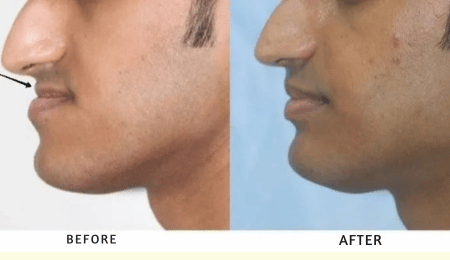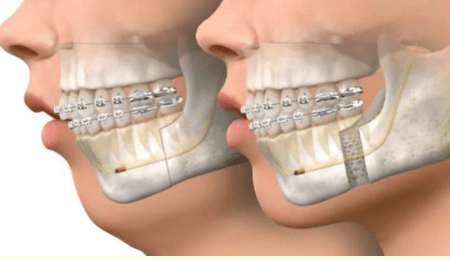Before and After Jaw Reconstruction: What Changed for You
Before and After Jaw Reconstruction
Jaw reconstruction is a life-changing surgical procedure that can dramatically improve both functionality and appearance. Whether due to trauma, congenital defects, or medical conditions like tumors, many people require jaw surgery to restore symmetry, bite alignment, and facial aesthetics. But what happens after the surgery? How does life change? This blog explores the journey of jaw reconstruction—from understanding the basics to the transformation patients experience afterward. We'll cover the causes, treatment options, and the profound impact this procedure has on a person's life.

Understanding Jaw Reconstruction
Jaw reconstruction, also known as orthognathic surgery, is a corrective surgical procedure aimed at realigning or rebuilding the jaw bones. It often involves collaboration between oral surgeons, orthodontists, and plastic surgeons. The goal is not only cosmetic but functional—to correct chewing, breathing, speaking, and alignment issues.
There are two main types of jaw reconstruction:
- Hard Tissue Reconstruction: Focuses on the bone structure using grafts or implants.
- Soft Tissue Reconstruction: Addresses the surrounding tissues for a natural appearance.
The surgery may involve the upper jaw (maxilla), lower jaw (mandible), or both, depending on the condition being treated.
Why Do People Need Jaw Reconstruction?
Jaw reconstruction is not just for aesthetic reasons. Many individuals undergo this surgery due to medical necessities. Here are some common reasons:
- Facial Trauma: Accidents or injuries that cause fractures or dislocation.
- Congenital Conditions: Such as cleft palate or jaw deformities present from birth.
- Tumor Removal: Reconstruction after removal of benign or malignant tumors.
- TMJ Disorders: Chronic jaw pain and joint dysfunction.
- Malocclusion: Misaligned bite that cannot be corrected with braces alone.
Symptoms that indicate a need for jaw reconstruction include chronic jaw pain, difficulty chewing, speech difficulties, and facial asymmetry.

Treatment and Recovery: What to Expect
The treatment process begins with a thorough diagnosis, including imaging (X-rays, CT scans), physical examination, and dental impressions. Once the treatment plan is finalized, the surgical procedure is scheduled.
Post-surgery, patients are monitored closely. Recovery may include:
- Swelling and Bruising: Common during the first few weeks.
- Pain Management: Controlled with medication.
- Dietary Adjustments: Liquid or soft food diet for several weeks.
- Speech and Physical Therapy: Helps in regaining normal function.
- Regular Follow-ups: To monitor healing and make necessary adjustments.
Full recovery can take anywhere from 6 weeks to several months, depending on the complexity of the case.

Will Jaw Surgery Change the Appearance of My Face?
Absolutely—jaw reconstruction often leads to noticeable facial changes. The surgery corrects imbalances, repositions the jaw, and creates a more symmetrical look. For many, this results in a more defined jawline, improved smile, and enhanced confidence. These transformations are particularly significant for those who have lived with facial deformities or asymmetries for years. However, the change is usually natural and harmonious with the rest of the face.
How Long After Jaw Surgery Can You Eat?
Eating after jaw reconstruction requires patience. Initially, you'll be on a liquid diet for the first 1 to 2 weeks to allow healing. Gradually, you can move to soft foods like mashed potatoes, scrambled eggs, and smoothies. By 6 to 8 weeks post-op, many patients can start reintroducing solid foods, depending on their healing progress and doctor's advice. Full return to a normal diet can take 3 months or more.
Tips for a Smooth Recovery
- Follow your surgeon's post-op instructions closely.
- Stay hydrated and eat nutrient-rich soft foods.
- Maintain excellent oral hygiene to prevent infection.
- Attend all follow-up appointments.
- Be patient—your body needs time to adjust and heal.
Meet Dr. Vinay Jacob
Dr. Vinay Jacob is a highly qualified and accomplished Senior Plastic and Reconstructive Surgeon in India, bringing over 25 years of surgical expertise. He earned his MBBS from St. John's Medical College, Bangalore, in 1991, and went on to complete his MS at Tata Memorial Hospital, Mumbai, in 1996. In 2001, he achieved the prestigious Magister Chirurgiae (MCh) and Diplomate of the National Board (DNB) in Plastic Surgery with Distinction.
Dr. Jacob specializes in a wide range of reconstructive procedures including gender-affirming surgeries, hand and facial rejuvenation, nasal and respiratory surgeries, limb salvage and prosthetics integration, body contouring, intimate and pelvic procedures, abdominal and hernia repair, neurological surgeries for pain relief, and breast reconstructive surgeries. Patients can consult Dr. Jacob at the Reconstructive Surgery Centre, 503 Sagar Fortune Building, Above A Kreations, Waterfield Road, Bandra (West), Mumbai - 400050.
FAQs
Q1. Is jaw reconstruction surgery painful?Mild to moderate pain is expected post-surgery, but it is manageable with medication and typically subsides within a week.
Q2. Can I speak normally after jaw surgery?Speech may be affected initially due to swelling, but most patients regain normal speech within a few weeks with the help of therapy.
Q3. Will I have scars after jaw reconstruction?Most incisions are made inside the mouth, minimizing visible scarring.
Q4. How long will I need to take off work or school?Most people take 2 to 4 weeks off, depending on the complexity of the surgery and their job type.
Q5. Are there risks involved in jaw surgery?As with any major surgery, risks include infection, nerve damage, or relapse of jaw position, though these are rare with experienced surgeons.
Q6. Do I need braces after surgery?Often, orthodontic treatment is combined with jaw surgery to ensure proper alignment.
Q7. How soon will I see results?Facial changes are noticeable almost immediately, but final results become evident as swelling reduces over weeks to months.
Conclusion
Jaw reconstruction is not just about aesthetics—it can dramatically improve quality of life, restore function, and enhance self-esteem. Whether you're considering this surgery for medical or cosmetic reasons, understanding the process and working with an expert like Dr. Vinay Jacob ensures a smooth, safe, and successful journey. If you're ready to explore your options, consult a professional and take the first step toward transformation.

